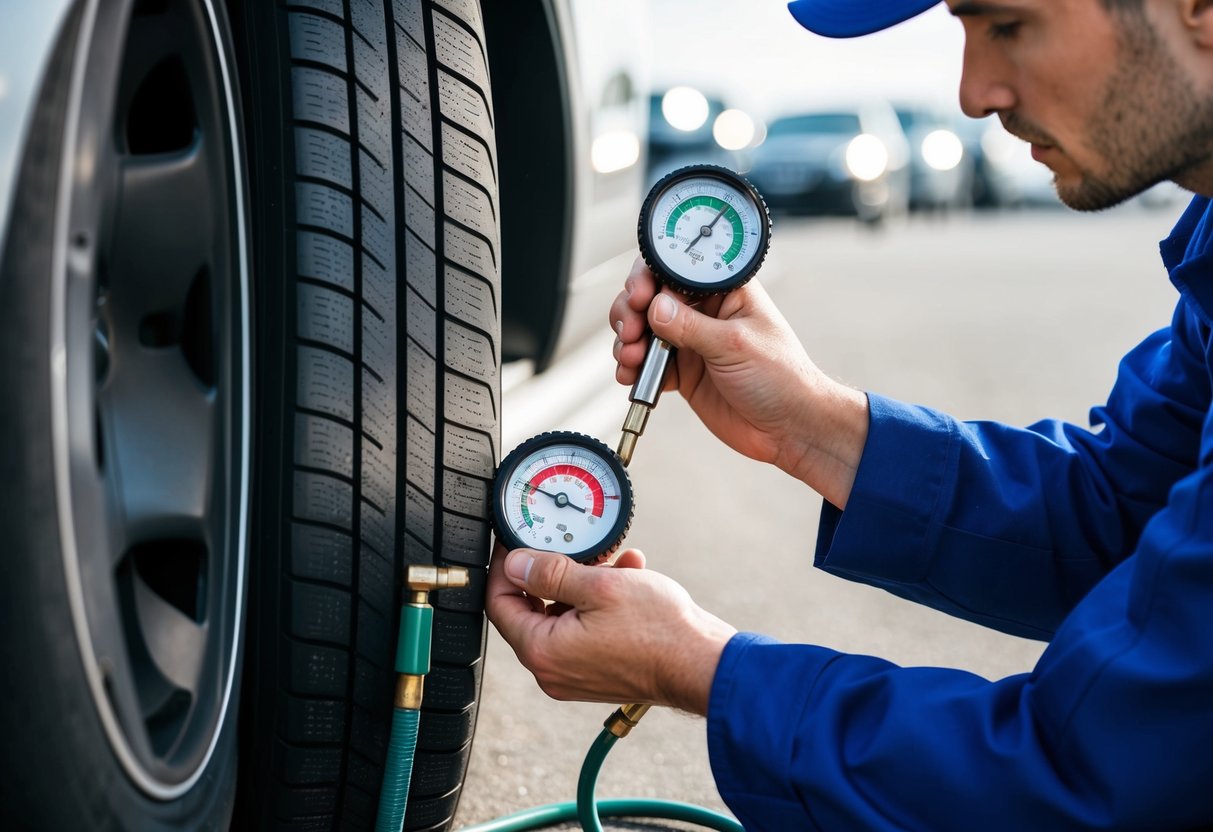
Tire Maintenance and Upkeep

Proper tire care is crucial for extending the life of your vehicle and improving safety. This involves maintaining correct tire pressure and tread depth, performing regular rotations and alignments, and selecting the right tires based on driving conditions.
Ensuring Correct Tire Pressure and Tread Depth
Maintaining the recommended tire pressure boosts gas mileage and ensures a smooth ride. Drivers should regularly check tire pressure using a reliable gauge and adjust it according to the manufacturer’s specifications. Underinflated tires can lead to increased wear and decreased fuel efficiency, while overinflated tires diminish traction and comfort.
Tread depth is equally important for safe driving. Tires with worn tread are less effective at gripping the road, particularly in wet conditions. A simple way to check tread depth is by using a tread depth gauge or inserting a penny into the tread grooves. If the top of Lincoln’s head is visible, it’s time to replace the tires. Regular inspection helps in early detection of problematic tread wear, preventing potential accidents.
The Importance of Regular Tire Rotations and Alignment
Regular tire rotations ensure even wear and extend the lifespan of tires. A good practice is to rotate tires every 6,000 to 8,000 miles to distribute wear more evenly. This process involves changing the tires from one position to another, such as moving the front tires to the back and vice versa. Uneven tire wear can lead to decreased performance and maneuverability.
Wheel alignment is another crucial aspect of tire maintenance. Misaligned wheels cause tires to wear unevenly and can lead to steering issues. Drivers should check for signs of misalignment, such as the vehicle pulling to one side or unusual tire wear patterns. Professional alignment services can rectify these issues, ensuring the vehicle’s wheels are positioned correctly.
Choosing the Right Tires for Your Driving Conditions
Selecting the appropriate tires for your driving conditions enhances performance and safety. In regions with heavy snowfall or road salt, winter tires provide better traction and durability. They are designed to handle lower temperatures and icy surfaces effectively. For drivers in warmer climates, all-season tires offer a balanced performance throughout the year.
Considering the driving environment is essential. Off-road enthusiasts should opt for tires with deeper treads and stronger sidewalls, while urban drivers benefit from performance tires with superior handling and braking capabilities. Consulting with a tire specialist can provide tailored recommendations based on individual driving habits and environmental factors. Proper tire selection not only promotes safety but also maximizes tire longevity.
Battery and Electrical System Maintenance
Maintaining the battery and the electrical system of your vehicle is crucial for ensuring its reliable operation. Important aspects include keeping battery terminals clean and secure, recognizing signs of battery wear, and conducting regular electrical system checks for better troubleshooting.
Cleaning and Securing Battery Terminals
Dirty or corroded battery terminals can impede the flow of electricity, leading to starting problems and reduced battery health. To clean battery terminals, disconnect the battery cables, starting with the negative terminal. Use a mixture of baking soda and water with a stiff brush to scrub the terminals.
Once cleaned, rinse off any residue and dry thoroughly. Reconnect the cables, securing them tightly to ensure a good connection. Regularly checking and cleaning battery terminals can significantly extend battery lifespan and improve overall vehicle performance.